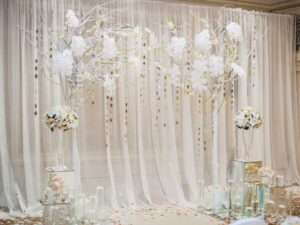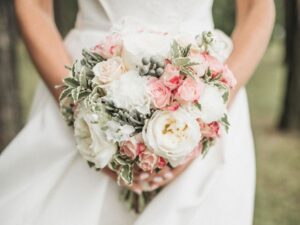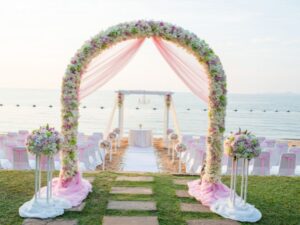Ah, weddings! The mere mention of the word often brings forth images of lavish ceremonies, grand receptions, and, of course, the all-important wedding dress. But let’s face it, not everyone’s got the cash to splurge on a designer gown that costs an arm and a leg. Well, guess what? You don’t have to break the bank to look drop-dead gorgeous on your big day. If you’re on the hunt for that perfect yet affordable wedding dress, you’re in for a treat. Dive in and let’s unravel the secrets!
Finding the Perfect Dress without Emptying Your Wallet
1. Consider Off-Peak Shopping
- Post-Wedding Season Sales: Most brides shop for their dresses in spring. Wait it out, and by summer’s end, many stores slash prices to clear out inventory.
- Black Friday & Holiday Sales: Believe it or not, these aren’t just for electronics and toys!
2. Pre-loved Dresses are a Gem
Hold the phone! Before you scrunch your nose up, remember: one woman’s once-worn is another woman’s brand new. Many brides:
- Wear the dress just once.
- Preserve them meticulously.
- Sell at a fraction of the original price.
3. Go Simple and Accessorize
Sometimes, less truly is more. A simple dress provides a blank canvas. You can:
- Add belts.
- Use statement jewelry.
- Incorporate unique veils.
Rent, Don’t Buy!
Who says you have to buy the dress? Many boutique shops and online platforms now offer exquisite dresses for rent. The pros?
- Wear a high-end designer dress for a lot less.
- No worries about storage post-wedding.
- Sustainable and eco-friendly.
The Magic of Custom-Made Dresses
Got a local tailor or designer you trust? Often, they:
- Offer prices much lower than big brands.
- Provide a unique touch tailored to your taste.
- Allow room for personalization and tweaks.
FAQs
1. Is it okay to buy a wedding dress online? Absolutely! But do your homework. Check reviews, understand return policies, and always size up (easier to tailor down than up).
2. Can alterations cost as much as the dress? They can, especially if extensive. Keep this in mind when budgeting. Sometimes a slightly pricier dress that fits better off-the-rack can save you in the long run.
3. Do I really need a traditional wedding dress? It’s your day! If you’re vibing with a chic pantsuit or a non-traditional color, go for it. Many brides find amazing “wedding” dresses in regular evening gown sections.
Avoiding Common Pitfalls
1. Don’t Go Overboard with Trends
Remember, photos last a lifetime. You don’t want to cringe at a too-trendy dress in a decade. Stick to timeless with a hint of trend.
2. Factor in Alteration Costs
As mentioned in the FAQs, alterations can be a sneaky expense. Always factor it into your budget.
3. Beware of Too-Good-To-Be-True Deals
Scams abound. If a deal feels fishy, it probably is. Always research and seek reviews.
Conclusion: Beauty Doesn’t Always Mean Expensive
When it comes to finding that dreamy yet affordable wedding dress, the sky’s the limit. From considering pre-loved options to renting or going the custom-made route, numerous avenues can lead you to the dress of your dreams without causing a financial nightmare. Remember, it’s not about the price tag—it’s about how you feel in it. And with the right strategies in hand, you’ll walk down the aisle looking a million bucks without actually spending it!
The Evolution and Impact of the Affordable Wedding Dress
History of “Affordable Wedding Dress”
The concept of a wedding dress dates back centuries, with different cultures having unique traditions. The idea of an “affordable wedding dress” emerged as a socio-economic response to varying societal needs and economic structures.
Historical Context
- Ancient Times: In ancient Rome and Greece, brides often wore long tunics in colors like red or yellow. These dresses weren’t specially crafted for weddings but were regular tunics, emphasizing the notion of affordability and functionality.
- Middle Ages: Marriages were often strategic alliances, and dresses were statements of familial wealth. However, common folk couldn’t afford luxurious materials and would typically wear their best church dress, regardless of its color.
- Industrial Revolution: The production of textiles became more accessible, and with the rise of department stores in the late 19th and early 20th centuries, ready-to-wear wedding dresses became available for the broader public.
- Post-War Era: Post WWII, there was a surge in marriages. Many brides needed affordable options and would often repurpose their service uniforms or buy simple dresses they could wear again.
- Modern Times: With globalization and the advent of online shopping, affordable wedding dresses from various regions became accessible worldwide. Brands like ASOS, H&M, and even Amazon introduced bridal lines catering to budget-conscious brides.
Step-by-step Process of Finding an “Affordable Wedding Dress”
- Budget Definition: Determine what you can spend without straining your finances.
- Research: Explore online platforms, thrift shops, rental services, and local tailors.
- Early Shopping: Start early to take advantage of sales or clearance events.
- Size Up: Always buy a slightly bigger size; it’s easier and often cheaper to alter down.
- Check Return Policies: Especially when shopping online, ensure there’s a robust return policy.
- Consult Reviews: Reviews give insights into quality, fit, and authenticity.
Case Studies
1. Sarah’s Vintage Find: Sarah discovered a 1970s vintage wedding dress at a local thrift store in pristine condition. With minor alterations, the dress that cost her $75 became the centerpiece of her retro-themed wedding.
2. Anika’s Rental Route: Anika wanted a designer dress but couldn’t justify the expense. She turned to a rental service, wore her dream dress, and returned it after, spending only 10% of the retail price.
3. Maria’s Family Heirloom: Instead of shopping, Maria chose to wear her grandmother’s wedding dress. A local tailor modernized the gown for a fraction of what a new dress would cost.
Benefits of “Affordable Wedding Dress”
Socio-economic Benefits:
- Redistribution of Finances: Money saved can be allocated to other crucial areas like housing, education, or investments.
- Supporting Local Businesses: Many affordable options come from local tailors or small businesses, fostering community growth.
Psychological Benefits:
- Reduced Stress: Financial strains are among the leading stressors in wedding planning. An affordable dress alleviates this pressure.
- Increased Satisfaction: Brides can experience joy without the cloud of debt or overspending.
Community-based Benefits:
- Sustainability: Buying second-hand or renting promotes sustainability by reducing waste.
- Cultural Exchange: Affordable dresses from different regions promote cultural appreciation and exchange.
Challenges Faced
- Quality Concerns: Lower costs can sometimes mean compromised quality.
- Limited Choices: Some affordable options might offer limited style or size selections.
- Stigma: There’s societal pressure and occasional stigma attached to not spending lavishly on a wedding dress.
Future Outlook
The next decade will likely see a further democratization of the wedding industry. Sustainable, eco-friendly dresses might dominate the market, with a shift towards virtual fittings and AR try-ons. Collaborative consumption, through renting or swapping, will gain traction, making the “affordable wedding dress” not just a budget-friendly choice but also a sustainable and socially responsible one.


